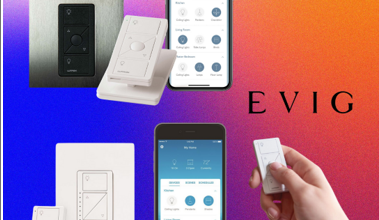Navigating Cloud Identity and Entitlement Management (CIEM) in Modern Cybersecurity

Cloud Security Landscape
Cloud computing has revolutionized organizations’ operations, providing remarkable flexibility, scalability, and cost-effectiveness. Yet, these advantages come with inherent security challenges that demand reevaluating traditional safeguarding measures. Cloud environments are complex, often consisting of multiple interconnected services and systems that require careful management to secure. This complexity is amplified by the global reach of cloud services and the diverse range of users accessing them, often from various geographical locations. Organizations face immense challenges in safeguarding sensitive data while maintaining access across these distributed systems, making it crucial to adopt robust security measures. CIEM emerges as a pivotal tool within this strategy, offering the granular access controls needed to thwart unauthorized access and safeguard digital assets in an expansive cloud landscape.
In today’s fast-paced digital landscape, guaranteeing the safety of cloud environments has emerged as a top concern for companies worldwide. The proliferation of digital transformation initiatives has made the cloud a central component of modern enterprise operations, promising flexibility and scalability that were previously unimaginable. However, with this promise comes an increased potential for security breaches and cyber threats that can jeopardize sensitive data and critical infrastructure. One crucial aspect of cloud security is CIEM, or Cloud Identity and Entitlement Management. CIEM is essential in protecting cloud environments by managing and monitoring user identities and permissions. This article explores the intricacies of CIEM, providing insights, data-based results, and practical applications to improve your cybersecurity approach.
Defining CIEM
Cloud Identity and Entitlement Management (CIEM) is a framework that governs access and manages user permissions, specifically within cloud environments. Unlike traditional identity management systems, which typically operate on-premises, CIEM solutions are specifically designed to tackle the distinct challenges posed by cloud architectures, including multi-tenant environments and varying access requirements. The impact of identity management on cloud security is substantial, as it provides organizations with the tools to establish and enforce flexible access policies. By precisely identifying who has access to what within the cloud, CIEM enables rigorous control over digital resources, helping organizations reduce the risk of unauthorized access, misuse, or data breaches and ultimately enhancing their overall security posture.
Key Features of a Strong CIEM Solution
When evaluating CIEM tools, organizations should rigorously assess several essential features contributing to an effective solution. First and foremost, seamless integration with existing cybersecurity infrastructure is critical to ensure compatibility and ease of use. Integration helps bridge the gap between existing systems and new CIEM solutions, ensuring data consistency and accessible transition. Real-time monitoring capabilities are also paramount, as they provide continuous insights into user activities and potential security threats, allowing organizations to respond to suspicious behavior and minimize possible damage quickly. Moreover, a comprehensive access control system ensures that permissions align with job roles and responsibilities, minimizing excessive or unnecessary access that can lead to potential vulnerabilities. Implementing CIEM doesn’t have to be overwhelming; adhering to best practices for selecting and implementing CIEM solutions can guide organizations through the process, helping them balance security and user efficiency—a crucial aspect in successfully adopting any new security measure.
Common Challenges in CIEM Adoption
Adopting CIEM presents its share of challenges that organizations must wisely navigate to ensure successful implementation. Compatibility issues with legacy systems often pose significant obstacles, as older systems may not inherently integrate with modern CIEM solutions. It can lead to arduous periods of transition and necessitates carefully planning system upgrades and identifying potential integration partners. Additionally, user resistance can impede progress—employees can be wary of new systems and processes, viewing them as complex or encroaching on their established workflows. Proper training and demonstrable benefits of the CIEM systems are essential in building acceptance.
Furthermore, the rapidly changing dynamics of cloud environments, characterized by continuous updates, expansions, and shifting threat landscapes, can introduce novel security risks if not properly managed. Businesses must adopt a mindset of agility, regularly revisiting and updating policies and practices to minimize vulnerabilities. By strategically addressing these challenges, organizations can maximize the effectiveness of CIEM and ward off potential security threats, ensuring that the benefits outweigh the implementation hurdles.
Data Insights on CIEM Implementation
The implementation of CIEM has been reinforced by recent studies and real-world data, underscoring its effectiveness in diminishing cloud security breaches. Statistical data provides compelling evidence for adopting CIEM solutions, revealing that enterprises implementing CIEM have experienced fewer instances of unauthorized access and data loss. This reduction in security incidents is significant, as it protects sensitive information, maintains regulatory compliance, and ensures business continuity. For example, organizations reported a notable decrease in data breach incidences post-CIEM implementation, bolstering trust in digital operations internally among stakeholders and externally with customers and partners. Organizations keen on elevating their cybersecurity posture can take cues from these insights, viewing CIEM as a critical component in their defensive strategy against evolving cyber threats, thereby positioning themselves as leaders in security-conscious operational excellence.
Real-World Examples
There are numerous case studies of companies that have effectively integrated CIEM into their cybersecurity frameworks, achieving significant improvements. Consider, for instance, a global technology leader that managed to curtail its security incidents by 40% within a year of deploying a flexible CIEM solution. This organization could streamline its operations while maintaining robust security practices by focusing on enhanced identity verification processes and real-time access management. Another example involves a mid-sized financial institution that leveraged CIEM to simplify the management of customer entitlements across its cloud services, resulting in improved user satisfaction and operational efficiency. These substantial improvements underline the potential benefits of adopting such frameworks. Furthermore, these case studies underscore common pitfalls to avoid, such as underestimating employee training needs or neglecting to align CIEM capabilities with organizational goals. By examining these real-world instances, businesses can better understand the practical advantages CIEM offers while learning from shared industry experiences, which are invaluable in crafting bespoke solutions that enhance individual and organizational resilience.
Future Trends in CIEM
The evolution of CIEM is marked by exciting trends as advancements in technology continue to reshape the field. AI and machine learning innovations are increasingly being integrated into CIEM solutions, offering improved predictive threat analysis and streamlined identity management processes. These technologies can automatically adjust user access based on behavioral analytics, flagging anomalies that diverge from typical usage patterns and mitigating potential threats before they escalate. As AI becomes more embedded in CIEM, tools may include enhanced automation, reducing manual intervention and further freeing up cybersecurity teams to focus on strategic initiatives. Over the next decade, as these technologies become more prevalent, we can anticipate a surge in security efficacy, helping businesses stay ahead of emerging threats and ensuring that their cloud environments remain secure and resilient against a backdrop of ever-changing cyber environments. These developments promise to transform how organizations approach identity management, making it more responsive to nuanced security needs and ultimately driving a new standard in protective measures.
Read more: Building a Financial Future: Essential Strategies for Holistic Wealth Management
Steps for Building a Robust CIEM Framework
Developing a resilient CIEM framework begins with a thorough and honest assessment of your security posture. Start by conducting a detailed audit to identify and prioritize risk areas and ensure potential vulnerabilities are accounted for within an overarching strategic plan. From there, creating an adaptive strategy that includes proactive monitoring and regular security assessments can significantly improve cloud security management. Regular analysis and iterative refinement of policies and strategies are crucial for maintaining pace with the evolving threat landscape. Companies must embrace a mindset of ongoing learning and adjustment, encouraging feedback and knowledge sharing from industry counterparts to ensure they remain at the forefront of cybersecurity best practices. Tailoring solutions to meet specific organizational needs while drawing on collective insights enables companies to effectively protect their digital assets and fortify their defenses against emerging cyber threats. By nurturing this proactive approach, organizations protect themselves and set a precedent for security excellence in their respective industries, fostering trust and confidence among partners and customers alike.
By grasping and applying the ideas presented in this article, businesses can significantly bolster their defenses against potential cyber threats, safeguarding their data, reputation, and operational integrity in the digital age. Embracing CIEM as part of a comprehensive cybersecurity strategy is wise and necessary in securing cloud environments now and in the future.





